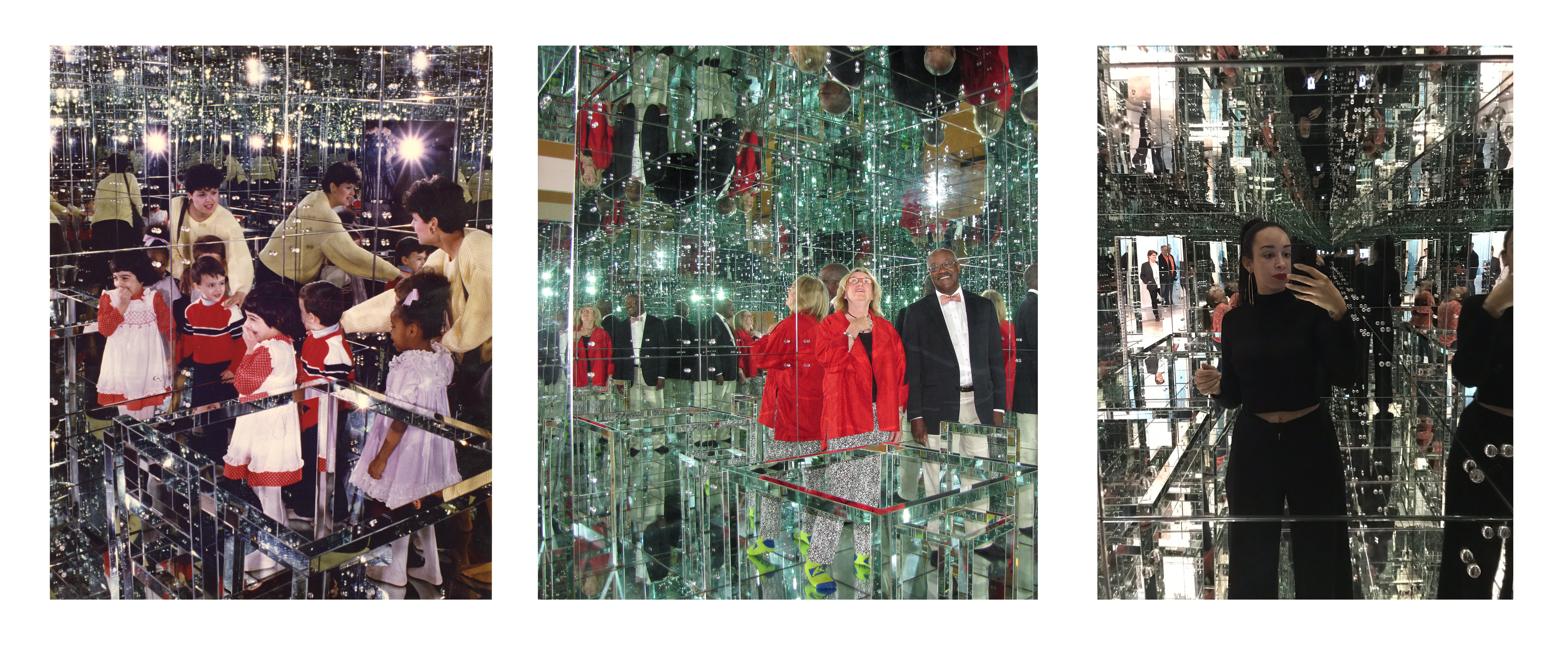Tens of thousands of people have enjoyed the absorbing experience of Lucas Samaras’s Mirrored Room since the museum acquired it in 1966, the same year it was made. This sculptural installation has become one of the most beloved works in the Buffalo AKG’s collection. As a central feature of the freely accessible Seymour H. Knox Building, this installation celebrates the way our community has seen itself reflected—literally and figuratively—in the museum. Archival and community-generated imagery populate the walls of the gallery, highlighting the creative ways our public has engaged with the work over the past half century. Photos from the 1960s to the present day mark the passage of time through notable shifts in photographic technologies and clothing choices, but one constant is the enthusiasm and fascination for the artwork visible on the faces of the people who experience it.
This exhibition also includes a video booth, community reflection wall, and mural highlighting decades of photographic engagements with the Mirrored Room. It is a tribute to our public’s dialogue with this artwork, while we continue the conversation in the context of our expanded campus. We invite you to participate and reflect with us.
Looking Back: Lucas Samaras's Mirrored Room is curated by Associate Curator Andrea Alvarez.





